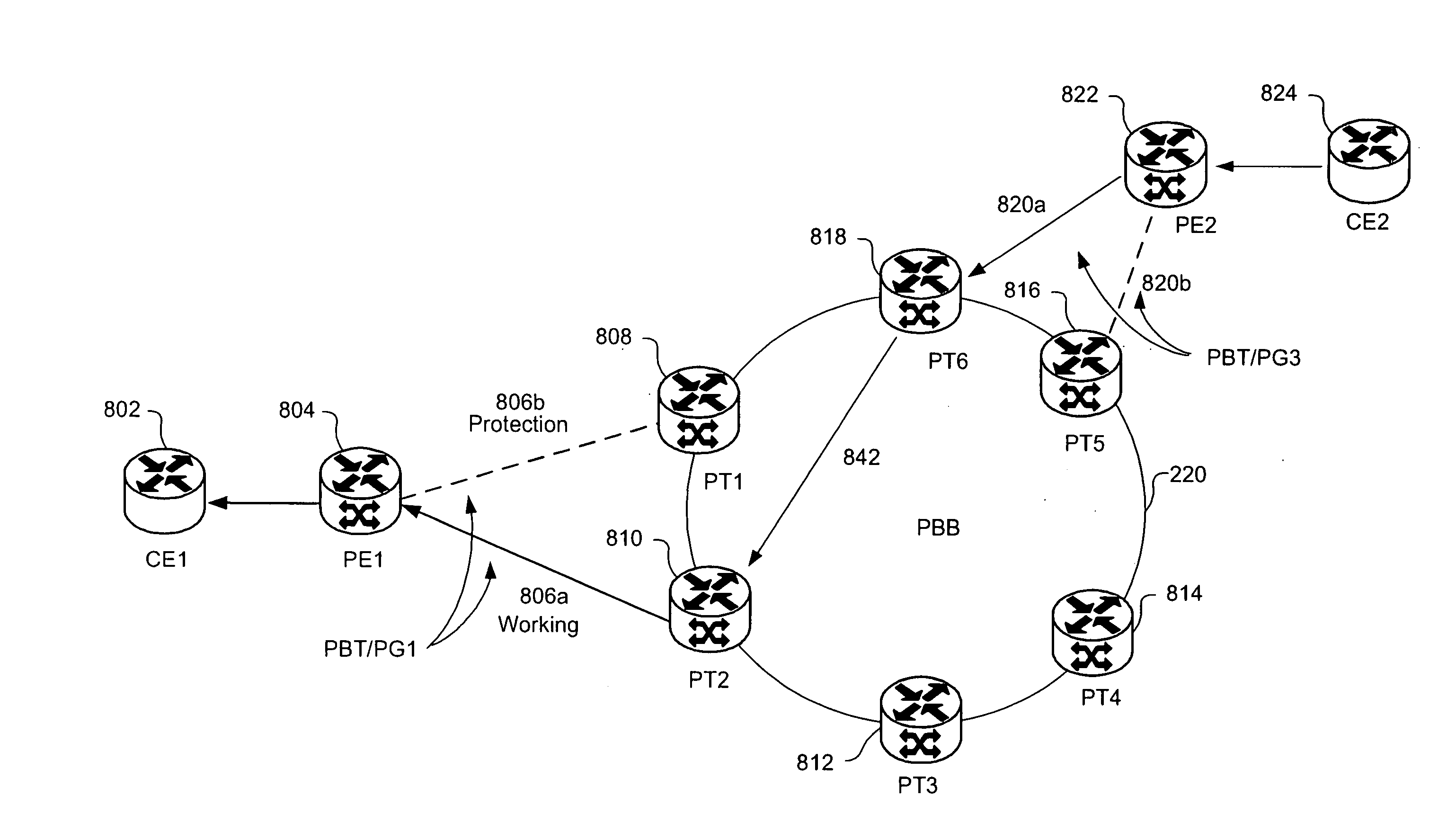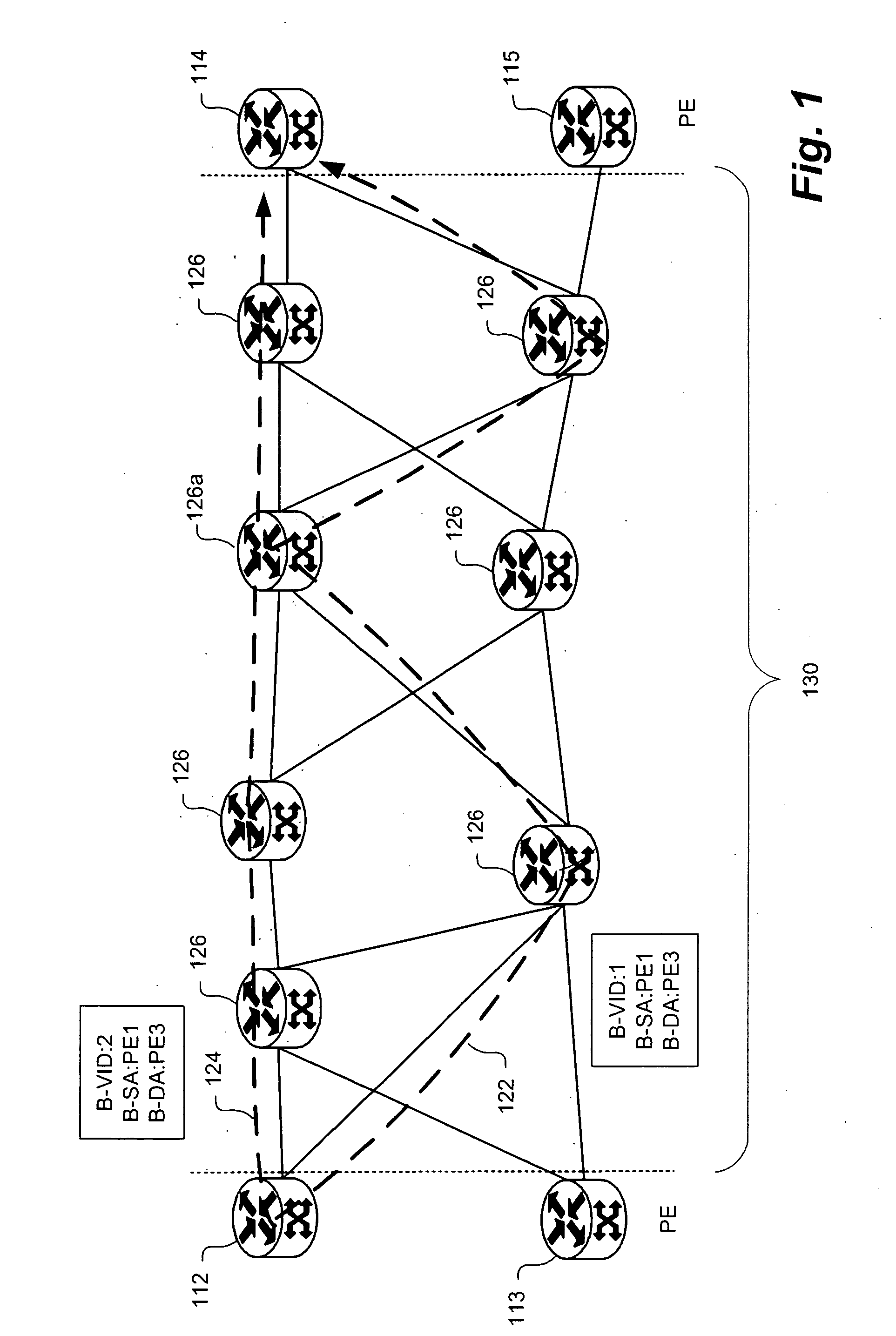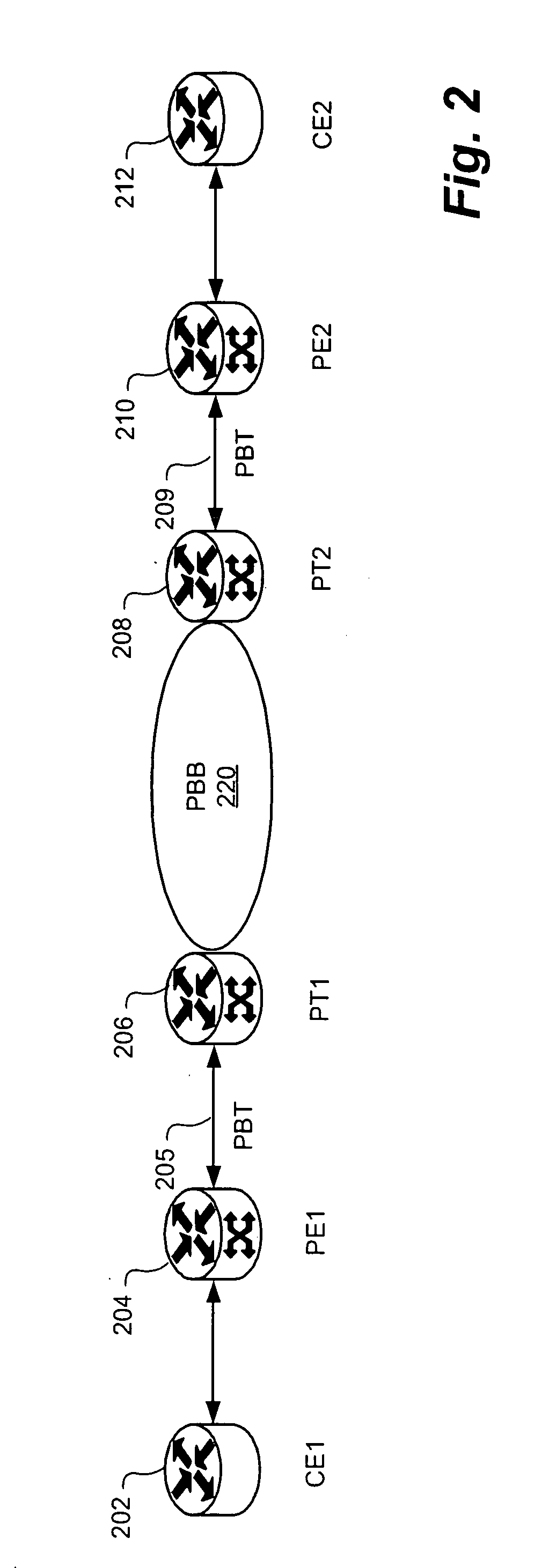Provider backbone bridging - provider backbone transport internetworking
- Summary
- Abstract
- Description
- Claims
- Application Information
AI Technical Summary
Benefits of technology
Problems solved by technology
Method used
Image
Examples
Embodiment Construction
[0034] Embodiments of the present invention are described below, by way of example only, with reference to FIGS. 1-9.
[0035] The present invention provides system and methods for creating very scalable and resilient hub and spoke LAN services by interconnecting access sub-networks such as Provider Backbone Transport (PBT) spokes to a distributed switching fabric sub-network such as a Provider Backbone Bridged (PBB) sub-network hub. The PBB comprises one or more customer aware switches interconnected with some form of bridged loop free interconnect (e.g. Spanning Tree Protocol (STP), Resilient Packet Ring (RPR), etc.). The distributed switching fabric sub-network may alternatively be implemented by a number of networking technologies. The sub-network may be a provider backbone bridged hub compliant with IEEE 802.1ah, a resilient packet ring, Multi-Protocol Label Switching (MPLS) virtual private network configuration (VPLS) or other virtualized layer 2 networks. The switches in the ce...
PUM
 Login to View More
Login to View More Abstract
Description
Claims
Application Information
 Login to View More
Login to View More - Generate Ideas
- Intellectual Property
- Life Sciences
- Materials
- Tech Scout
- Unparalleled Data Quality
- Higher Quality Content
- 60% Fewer Hallucinations
Browse by: Latest US Patents, China's latest patents, Technical Efficacy Thesaurus, Application Domain, Technology Topic, Popular Technical Reports.
© 2025 PatSnap. All rights reserved.Legal|Privacy policy|Modern Slavery Act Transparency Statement|Sitemap|About US| Contact US: help@patsnap.com



